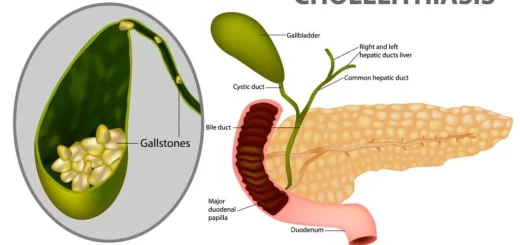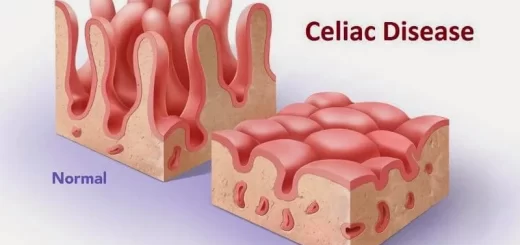Flexors of forearm, Forearm muscles, structure, function and anatomy
The forearm contains two compartments, the anterior (flexor) and posterior (extensor). The two compartments together have twenty muscles. Forearm muscles or antebrachium work together to move the elbow, forearm, wrist, and digits of the hand. They have two categories: intrinsic and extrinsic muscles. The intrinsic muscles move the forearm by pronating and supinating the radius and ulna. The extrinsic muscles flex & extend the digits of the hand.
Flexors of forearm
The muscle of the forearm is arranged into 2 groups; superficial and deep.
Superficial flexors of the forearm
They are 5 in numbers. Arranged from lateral to medial, they are Pronator teres, Flexor carpi radialis, Palmaris longus, Flexor digitorum superficialis, and Flexor carpi ulnaris.
Pronator teres
Origin:
- Superficial (humeral) head: common flexor origin ( the front of the medial epicondyle) and from the lower part of the medial supracondylar ridge.
- Deep (ulnar) head: Medial border of coronoid process of the ulna.
Insertion: Into an impression in the middle of the lateral surface of the shaft of the radius.
Nerve supply: Median nerve.
Actions: The muscle pronates the forearm and is a week flexor of the elbow.
Flexor Carpi Radialis
- Origin: Common flexor origin.
- Insertion: Bases of 2nd and 3rd metacarpal bones.
- Nerve supply: Median nerve.
- Actions: Flexion of the forearm. Flexion and abduction of the wrist.
Palmaris Iongus (The muscle may be absent)
- Origin: Common flexor origin.
- Insertion: Apex of plamer aponeurosis.
- Nerve supply: Median nerve.
- Actions: Flexion of the wrist, and Tension of the palmar aponeurosis.
Flexor digitorumsuperficialis
- Origin: Humeroulnar head: common flexor origin and medial border of coronoid process of the ulna. Radial head: from the oblique line on the front of the shaft of the radius.
- Insertion: By 4 tendons into the middle phalanges of the medial 4 fingers. On reaching the proximal phalanges, each tendon divides into two slips, reunites, and finally inserted into the sides of the middle phalanges. It gives passage for the flexor digitorum profudus tendon.
- Nerve Supply: Median nerve.
- Actions: Flexion of proximal interphalangeal and metacarpophalangeal joints of the medial 4 fingers + Flexion of the head + Flexion of the forearm.
Flexor Carpi Ulnaris
- Origin: Humeral dead: from common flexor origin. Ulnar head: from the medial border of the olecranon process and posterior border of the ulna.
- Insertion: Pisiform bone, pisohamate ligament (to the hook of hamate), and pisometacarpal ligament (to the base of 5th metacarpal bone).
- Nerve Supply: Ulnar nerve. Pisiform bone, pisohamate ligament (to the hook of hamate), and pisometacarpal ligament (to the base of 5th metacarpal bone).
- Actions: Flexion and adduction of wrist join, and Flexion of the forearm.
The superficial group of forearm flexor muscles mainly arises from the common flexor origin (the font of the medial epicondyle). All the superficial flexors have their nerve supply from the median nerve except flexor carpi ulnaris that takes its supply from the ulnar nerve.
Deep flexor of the forearm
They are Flexor pollicis longus, Flexor digitorum profundus, and Pronator quadratus.
Flexor pollicis longus
- Origin: Upper ¾ of the anterior surface of shaft of the radius, and Interosseous membrane.
- Insertion: Base of the terminal phalanx of the thumb.
- Nerve Supply: Anterior interosseous nerve (branch of the median nerve).
- Actions: Flexion of all joints of the thumb. Helps in flexion of the wrist.
Flexor digitorum profundus.
- Origin: Upper ¾ of anterior and medial surfaces of shaft of the ulna. Interosseous membrane.
- Insertion: Bases of terminal phalanges of the medial 4 fingers.
- Nerve Supply: Medial ½ by the ulnar nerve. Lateral 2/1 by the anterior interosseous nerve (branch of the median nerve).
- Actions: Flexion of all joints of the medial 4 fingers. Helps in flexion of the wrist joint.
Pronator quadratus
- Origin: Lower ¼ of the anterior surface of shaft of the ulna.
- Insertion: Lower ¼ of the anterior surface of shaft of the radius.
- Nerve Supply: Anterior interosseous nerve.
- Actions: Pronation of forearm.
Extensor of forearm
There are Seven superficial muscles and Five deep muscles.
Superficial extensor muscles
- Brachioradialis.
- Extensor carpi radialis longus.
- Extensor carpi radialis brevis.
- Extensor digitorum.
- Extensor digiti minimi.
- Extensor carpi ulnaris.
- Anconeus.
Brachioradialis
- Origin: Upper 2/3 of the lateral supracondylar ridge of the humerus.
- Insertion: Base of the styloid process of the radius.
- Nerve Supply: Radial nerve.
- Actions: Flexion of the elbow at midprone position.
Extensor carpi radiali longus
- Origin: Lower 1/3 of the lateral supracondylar ridge of the humerus.
- Insertion: Posterior surface of the base of 2nd metacarpal bone.
- Nerve Supply: Radial nerve.
- Actions: Extension and abduction of the wrist.
Extensor carpi radialis brevis
- Origin: Common extensor origin (front of lateral epicondyle of the humerus).
- Insertion: Posterior surface of base of 3rd metacarpal bone.
- Nerve supply: Posterior interosseous nerve.
- Actions: Extension and abduction of the wrist.
Extensor digitorum
- Origin: Common extensor origin.
- Insertion: The tendons expand on the posterior surface of proximal phalanges of the medial 4 fingers forming the extensor expansion. Each extensor expansion splits into 3 slips: a central slip inserted into the base of the middle phalanx, and 2 lateral slips which are inserted into the base of the distal phalanx. The extensor expansion receives also the insertion of the corresponding lumbrical and interossei muscles.
- Nerve supply: Posterior interosseous nerve.
- Actions: Extension of all joints of the medial 4 fingers, and it helps in the expansion of the wrist.
Extensor digiti minimi
- Origin: Common extensor origin.
- Insertion: Extensor expansion of the little finger.
- Nerve supply: Posterior interosseous nerve.
- Actions: Extension of all joints of the little finger, and Extension of wrist.
Extensor carpi ulnaris
- Origin: Common extensor origin, and Posterior border of ulna.
- Insertion: Posterior surface of the base of 5th metacarpal bone.
- Nerve supply: Posterior interosseous nerve.
- Actions: Extension and adduction of the wrist.
Anconeus
- Origin: Posterior of lateral epicondyle of humerus.
- Insertion: Lateral surface of olecranon process of ulna.
- Nerve Supply: Radial nerve.
- Actions: It helps in extension of elbow.
Deep extensor muscles
- Supinator.
- Abductor pollicis longus.
- Extensor pollicis brevis.
- Exensor pollicis longus.
- Extensor indicis.
Supinator
Origin:
- Supinator crest and fossa in ulna.
- Lateral epicondyle of humerus.
- Lateral ligament of elbow joint.
- Annular ligament.
Insertion: Upper 1/3 of shaft of radius.
Nerve Supply: Posterior interosseous nerve.
Actions: Supination of the forearm.
Abductor pollicis longus
Origin:
- Posterior surface of radius.
- Posterior surface of ulna.
- Interosseous membrane.
Insertion: Posterior surface of the base of 1st metacarpal bone.
Nerve supply: Posterior interosseous nerve.
Actions: Abduction of the thumb, and Extension of the thumb at the carpometacarpal joint.
Extensor pollicis brevis
Origin:
- Posterior surface of radius.
- Interosseous membrane.
Insertion: Proximal phalanx of the thumb.
Nerve supply: Posterior interosseous nerve.
Actions: Extension of metacarpophalangeal and carpometacarpal joints of the thumb.
Extensor pollicis longus
- Origin: Posterior surface of ulna, and interosseous membrane.
- Insertion: Distal phalanx of the thumb.
- Nerve supply: Posterior interosseous nerve.
- Actions: Extension of all joints of the thumb, and it helps in abduction of the thumb.
Extensor indicis.
- Origin: Posterior surface of ulna, and Interosseous membrane.
- Insertion: Extensor expansion of the little finger.
- Nerve supply: Posterior interosseous nerve.
- Actions: Extension of all joints of index finger.
Forearm bones, anatomy, function & Skeleton of the hand
Arm structure, compartments, muscles, anatomy & Cubital Fossa contents
Bones of upper limb structure, function, types & anatomy
Bone (Osseous Tissue) types, structure, function & importance
Types of bones, Histological features of compact bone & cancellous bone



